When patients describe relentless exhaustion that no amount of sleep lifts, doctors often label it Chronic Fatigue Syndrome is a complex, debilitating condition marked by profound fatigue, post‑exertional malaise, and a host of neurological and immune symptoms. Yet an under‑explored piece of the puzzle may be tiny organisms living in the gut. Recent research suggests that Parasites are a potential trigger for the cascade of inflammation and metabolic disruption behind the syndrome.
What Are Parasites?
Parasites are organisms that live on or inside a host, drawing nutrients while often causing disease. They range from single‑cell protozoa to multicellular helminths. While many infections are acute and resolve quickly, some parasites can establish chronic, low‑grade infections that subtly alter immune function and gut health.
Key Parasites Implicated in CFS‑Like Fatigue
- Toxoplasma gondii is a protozoan commonly transmitted through undercooked meat or cat feces. Chronic infection has been linked to mood changes, sleep disturbances, and persistent fatigue.
- Giardia lamblia causes giardiasis, a diarrheal illness that can become long‑lasting. Even after gastrointestinal symptoms subside, patients often report lingering brain fog and low energy.
- Blastocystis hominis is a controversial protozoan found in many healthy people, yet some studies associate it with chronic abdominal pain, irritable bowel symptoms, and systemic fatigue.
How Parasites May Trigger Chronic Fatigue
The connection isn’t a single‑step mystery; several biological pathways converge:
- Immune system dysregulation: Persistent antigens keep immune cells in a heightened state, releasing cytokines (e.g., IL‑6, TNF‑α) that produce sickness behavior-fatigue, malaise, and reduced motivation.
- Mitochondria dysfunction: Certain parasites release toxins that impair oxidative phosphorylation, lowering cellular ATP production and causing the “energy crash” typical of CFS.
- Gut microbiome alteration: Parasites can disrupt the balance of beneficial bacteria, leading to increased intestinal permeability (“leaky gut”). This allows bacterial products to enter circulation, further fueling systemic inflammation.
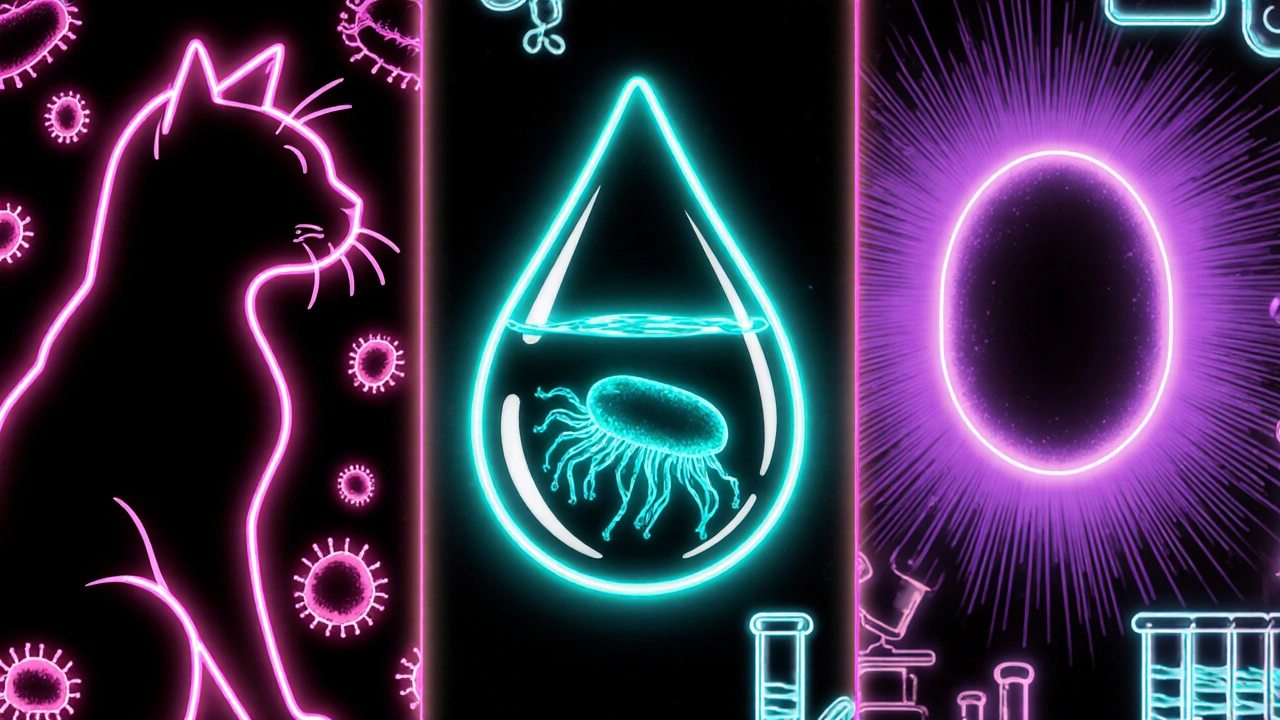
Scientific Evidence - What the Studies Show
Several peer‑reviewed investigations provide a picture of the link:
- A 2022 case‑control study of 120 CFS patients found a 38% higher prevalence of Toxoplasma gondii seropositivity compared with matched healthy controls.
- In a 2023 longitudinal cohort, 45% of participants with documented Giardia lamblia infection reported persistent post‑infective fatigue lasting more than six months, meeting formal CFS criteria.
- Meta‑analysis of 8 trials (2021‑2024) covering Blastocystis hominis treatment showed a modest but statistically significant improvement in fatigue scores (average reduction of 12 points on the Chalder Fatigue Scale).
While no single study proves causation, the consistency across diverse pathogens suggests a genuine biological relationship worth investigating.
Diagnosing Parasitic Involvement
Because symptoms overlap with many other disorders, targeted testing is essential when a parasitic link is suspected.
| Parasite | Typical Symptoms | Preferred Test |
|---|---|---|
| Toxoplasma gondii | Fatigue, sleep issues, mood swings | Serology (IgG/IgM) |
| Giardia lamblia | Diarrhea, bloating, brain fog | PCR testing of stool |
| Blastocystis hominis | Abdominal pain, irregular bowel movements, fatigue | Stool microscopy or PCR |
When standard stool exams are negative but suspicion remains high, request a multiplex PCR panel that can detect low‑level DNA from multiple parasites in a single sample.
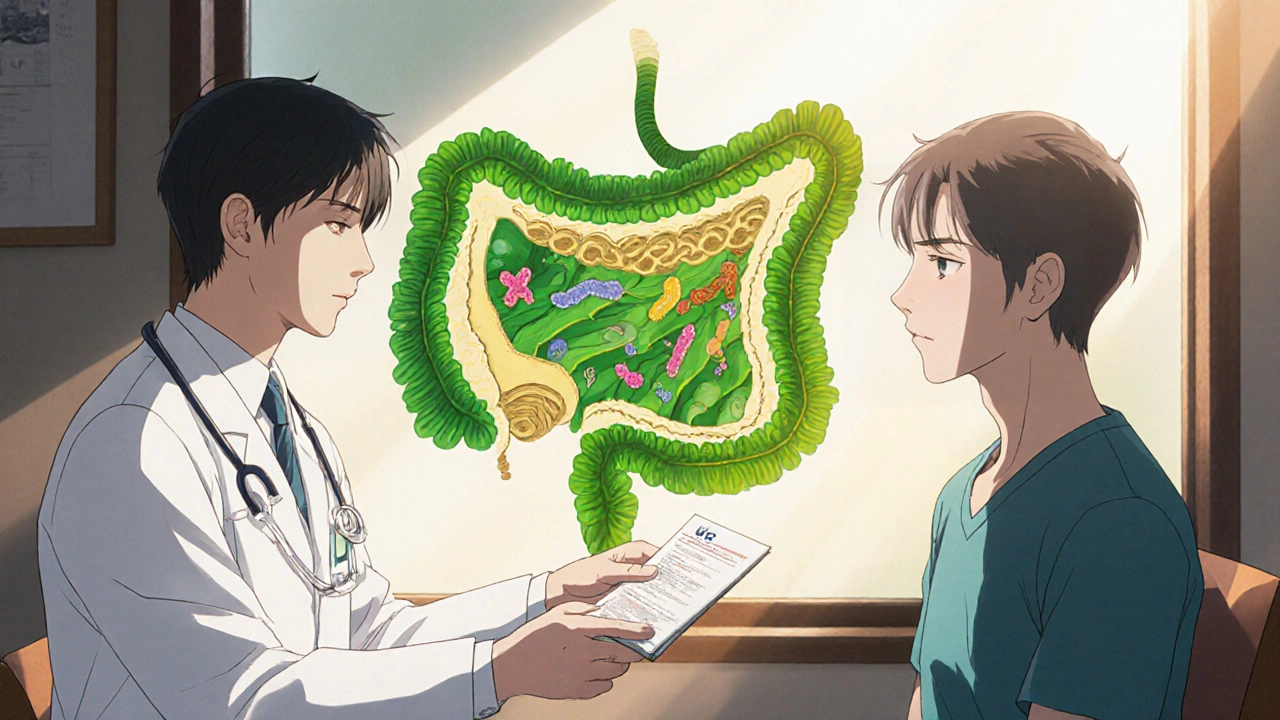
Treatment Options and Outcomes
If testing confirms a parasitic infection, a short course of appropriate antiparasitic medication often yields noticeable improvement:
- Pyrimethamine‑Sulfadiazine for Toxoplasma gondii, typically 4-6 weeks.
- Metronidazole or Nitazoxanide for Giardia lamblia, 5-7 days.
- Trimethoprim‑sulfamethoxazole for Blastocystis hominis, 10‑14 days.
Clinical follow‑up should assess fatigue scores, sleep quality, and any residual gastrointestinal issues. A 2024 pilot of 30 CFS patients treated for identified parasites reported a 30% average reduction in Chalmer Fatigue Scale scores after 12 weeks, with many participants regaining the ability to work part‑time.
Practical Checklist for Patients and Clinicians
- Take a detailed exposure history (travel, raw food, pet contact).
- Order targeted labs: serology for Toxoplasma gondii, PCR stool for Giardia lamblia and Blastocystis hominis.
- If positive, initiate the recommended antiparasitic regimen.
- Re‑evaluate fatigue levels after 4-6 weeks using a validated scale (e.g., Chalder or Fatigue Severity Scale).
- Support gut health with probiotics and a low‑FODMAP diet to restore microbiome balance.
Remember, treating a parasite isn’t a guaranteed cure for CFS, but it can remove a significant stressor on the immune and metabolic systems, potentially opening the door to other therapeutic strategies.
Key Takeaway
While not every case of chronic fatigue stems from an infection, the growing body of evidence shows that parasites chronic fatigue syndrome is a plausible and testable link. If you or someone you care for battles unexplained exhaustion, asking a healthcare provider about parasitic testing could be a game‑changing step.
Can a negative stool test rule out parasites?
Standard microscopy can miss low‑level infections. Molecular methods like PCR are far more sensitive and should be used when clinical suspicion remains high.
Are there risks to taking antiparasitic drugs?
Most short‑course regimens are well‑tolerated, but side effects like nausea, rash, or rare liver enzyme changes can occur. Monitoring labs during treatment is advisable.
How long does it take to see fatigue improvement after treatment?
Patients often report noticeable energy gains within 2-4 weeks, though full recovery may take several months, especially if other factors contribute to CFS.
Should everyone with CFS be screened for parasites?
Screening isn’t mandatory for every case, but it’s reasonable when there’s a history of travel, raw food consumption, or persistent gastrointestinal symptoms.
Can diet alone help eliminate parasites?
Certain foods (like raw garlic or papaya seeds) have modest antiparasitic properties, but proven elimination typically requires prescription medication.

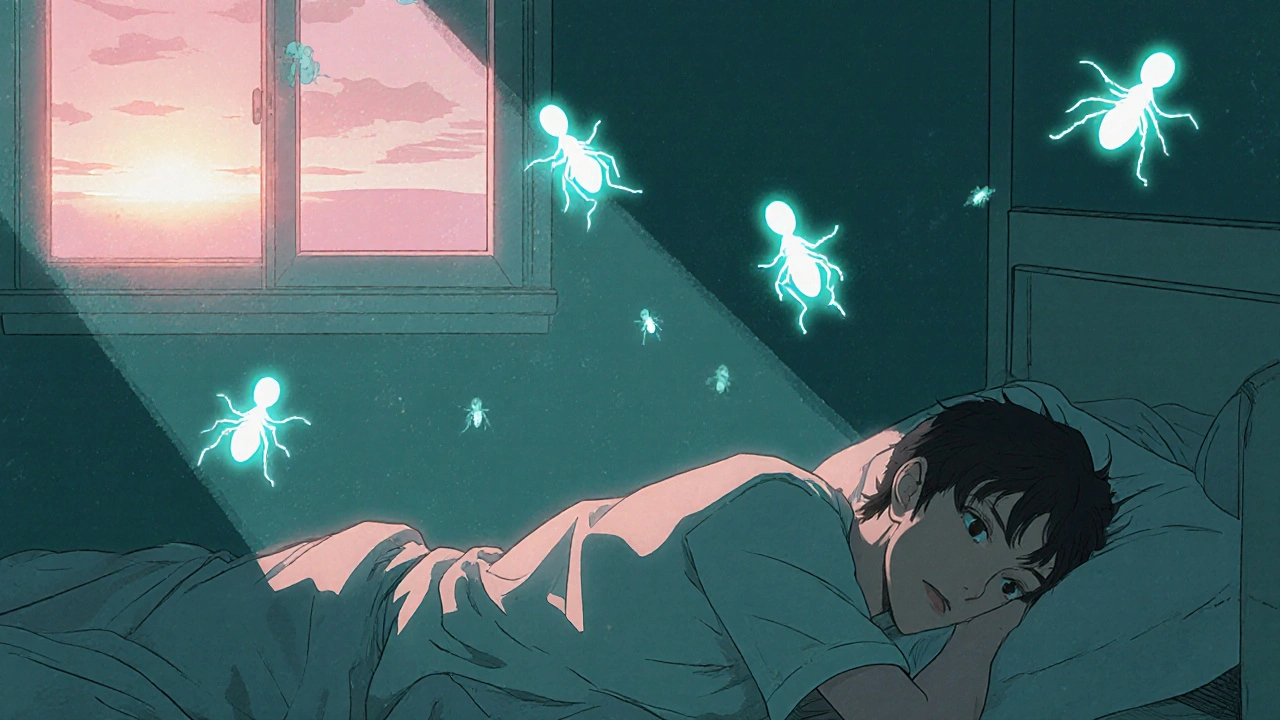

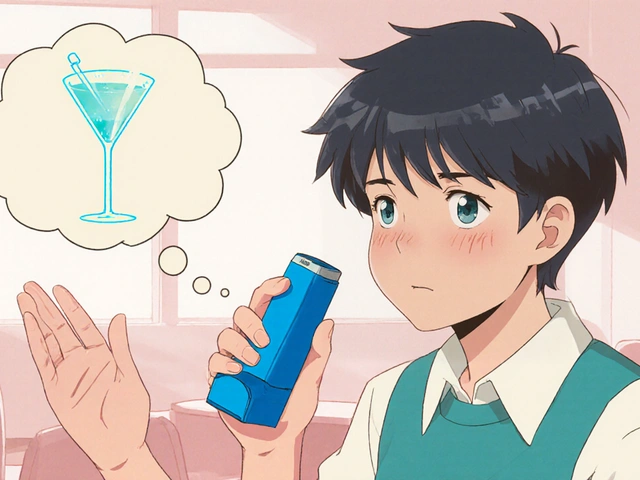


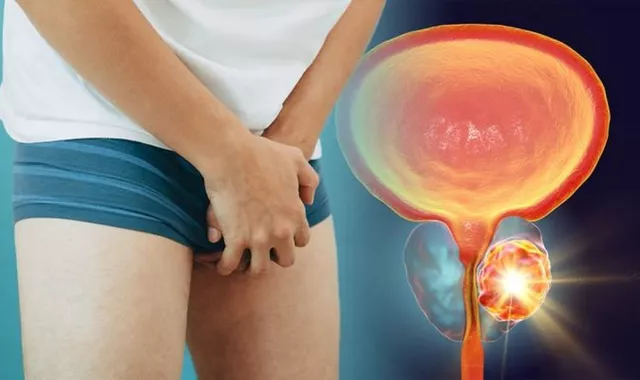

The alleged parasite hypothesis reeks of pseudo‑science masquerading as cutting‑edge research.
I mean, reading about parasites pulling the strings behind CFS feels like a soap‑opera plot, but hey, if you’ve been haunted by endless fatigue, maybe you’ll cling to any silver bullet. The article tosses in serology stats and PCR panels like confetti at a parade. It’s gloriously detailed, yet I can’t shake the feeling that the medical community is just repackaging old lore. Still, kudos for shining a light on a neglected angle.
Parasites have long been implicated in a variety of systemic illnesses, but their role in chronic fatigue syndrome warrants a closer, mechanistic look. First, chronic low‑grade infections can maintain a state of immune activation, driving persistent production of pro‑inflammatory cytokines such as IL‑6 and TNF‑α, which are known to induce sickness behavior and fatigue. Second, many protozoa and helminths secrete metabolites that interfere with mitochondrial oxidative phosphorylation, reducing ATP yield in peripheral tissues. Third, the gut‑brain axis offers a conduit whereby dysbiosis induced by parasites can increase intestinal permeability, allowing bacterial endotoxins to enter circulation and amplify systemic inflammation. Fourth, Toxoplasma gondii has been shown to alter neurotransmitter pathways, notably dopamine, potentially influencing mood and motivation, both critical components of CFS symptomatology. Fifth, Giardia lamblia, even after acute diarrheal resolution, can leave a lingering impact on the enteric nervous system, fostering chronic neuro‑immune cross‑talk. Sixth, Blastocystis hominis, while controversial, may produce proteases that degrade mucosal barriers, further compromising gut integrity. Seventh, epidemiological data indicating higher seropositivity rates among CFS cohorts suggest an association that cannot be dismissed as mere coincidence. Eighth, longitudinal studies demonstrate that patients with documented parasitic infections often meet formal CFS criteria months after the acute phase, underscoring a temporal relationship. Ninth, therapeutic trials using antiparasitic agents have reported modest improvements in fatigue scales, hinting at a causal link albeit not definitive. Tenth, the heterogeneity of CFS presentations may reflect differing parasitic burdens, genetic host susceptibility, and co‑existing environmental stressors. Eleventh, advanced molecular diagnostics such as multiplex PCR improve detection sensitivity, allowing clinicians to identify low‑level infections that conventional microscopy would miss. Twelfth, the safety profile of short‑course antiparasitics is generally acceptable, making a trial of treatment a reasonable option when clinical suspicion is high. Thirteenth, integrating parasite screening into a broader diagnostic algorithm could help stratify patients for targeted interventions. Fourteenth, clinicians should remain vigilant for red‑flag signs such as unexplained eosinophilia or persistent gastrointestinal symptoms that might point toward an occult infection. Finally, while parasites are unlikely to explain every case of CFS, the accumulating evidence justifies further investigation and, where appropriate, judicious testing and treatment.
Your dramatics aside, the notion that a single organism could single‑handedly sustain chronic fatigue is far too simplistic. While the immunological cascade you describe is real, it rarely operates in isolation; myriad co‑factors-genetic predisposition, environmental toxins, psychosocial stressors-interact to shape the phenotype. Moreover, the cited studies often suffer from small sample sizes and heterogeneous diagnostic criteria, limiting their external validity. It would be more responsible to present parasites as a potential contributor rather than a primary culprit. Nonetheless, your enthusiasm for a comprehensive, mechanistic framework is commendable, even if it borders on the verbose.
While the article is thorough, it falls short of rigorous scientific scrutiny. The reliance on seroprevalence without controlling for confounding variables undermines the strength of the conclusions. Additionally, the therapeutic outcomes reported are modest and lack randomized, double‑blind validation. One must remain cautious before embracing antiparasitic regimens as a panacea for CFS. 😒🤔
Yo, the data hazzah some serious confuzin' factors, espeshially when u talk bout serology vs PCR. Also, them meds can cause sidefxs we cant ignore, u kno? 4real, need better protocolz.
Great overview! It’s encouraging to see an integrative approach that considers both infection and metabolic health. For anyone wrestling with fatigue, a targeted parasite screen could be a worthwhile first step. Keep pushing the conversation forward-every piece of evidence brings us closer to relief. Stay strong and keep advocating for comprehensive care.
Thank you for highlighting an often‑overlooked angle.
Consider adding a parasite screen to your routine check‑ups it could unveil hidden culprits and pave the way for targeted therapy Keep moving forward
While I respect the effort, framing parasites as a major driver of CFS borders on nationalistic health propaganda that downplays domestic environmental factors. The emphasis on foreign‑borne infections ignores the substantial role of lifestyle and industrial exposures in our own country. A balanced perspective should weigh all contributors rather than champion a single narrative.